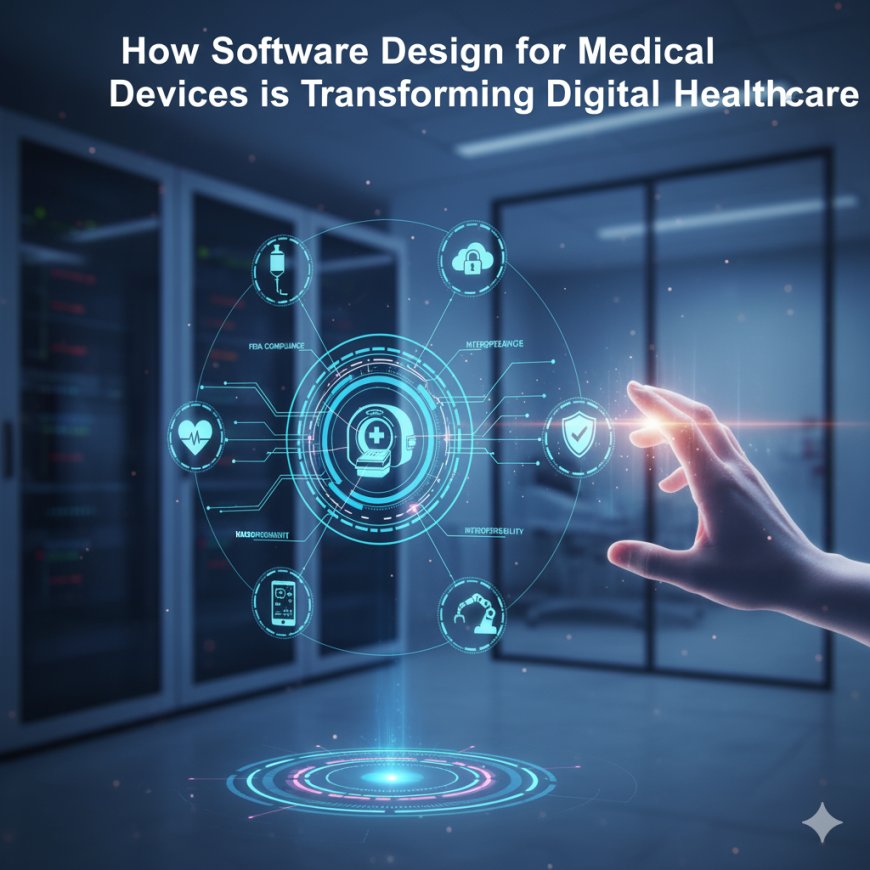How Software Design for Medical Devices is Transforming Digital Healthcare
Traditionally, medical devices were hardware-driven—think pacemakers, infusion pumps, or MRI machines. Today, however, software is the true intelligence behind these technologies.

Introduction
The future of healthcare is digital—and at the heart of this transformation lies software design for medical devices. As hospitals, clinics, and patients increasingly rely on connected technologies, innovative software solutions are reshaping how care is delivered, monitored, and managed. From smart wearables to AI-powered diagnostic tools, well-designed medical software is revolutionizing the entire healthcare ecosystem.
The Role of Software in Modern Medical Devices
Traditionally, medical devices were hardware-driven—think pacemakers, infusion pumps, or MRI machines. Today, however, software is the true intelligence behind these technologies. It enables data collection, real-time analytics, remote monitoring, and automated alerts that improve both patient safety and clinical efficiency.
Modern medical device software serves multiple functions:
- Data integration: Seamlessly connects devices with electronic health records (EHRs) and cloud platforms.
- Decision support: Uses algorithms and AI to help clinicians make faster, more accurate diagnoses.
- Patient engagement: Empowers individuals to track and manage their own health through intuitive apps and interfaces.
Key Trends Shaping Software Design for Medical Devices
The evolution of digital healthcare has accelerated the demand for smart, secure, and regulatory-compliant software solutions. Some key trends include:
- AI and Machine Learning Integration
Predictive analytics and intelligent automation are enabling devices to learn from patient data, personalize treatment, and detect anomalies before they become critical. - Interoperability and Connectivity
Software now allows seamless communication between different medical systems, ensuring a holistic view of the patient’s health journey. - Cybersecurity and Compliance
With sensitive patient data at stake, robust security measures and adherence to standards like ISO 13485, IEC 62304, and FDA guidelines are more essential than ever. - User-Centered Design
Effective UI/UX design enhances usability, minimizes human error, and ensures that both clinicians interact confidently with medical devices.
The Impact on Patients and Healthcare Providers
The integration of advanced software design for medical devices is transforming how healthcare providers deliver care and how patients experience it.
- For providers, software-driven devices streamline workflows, improve diagnostic precision, and reduce manual intervention.
- For patients, they offer personalized care, continuous monitoring, and a better understanding of their health status—all from the comfort of their homes.
This synergy between design and functionality is the cornerstone of digital healthcare innovation.
Looking Ahead: The Future of Medical Device Software
As emerging technologies like IoT, blockchain, and 5G continue to mature, medical device software will become even more adaptive, predictive, and interconnected. Companies investing in high-quality software design for medical devices are positioning themselves at the forefront of a digital healthcare revolution—where data-driven insights and patient-centric solutions define success.
Conclusion
From diagnostics to remote care, software design for medical devices is not just enhancing healthcare—it’s redefining it. The collaboration between engineers, developers, and clinicians is enabling a safer, smarter, and more connected future in medicine.































